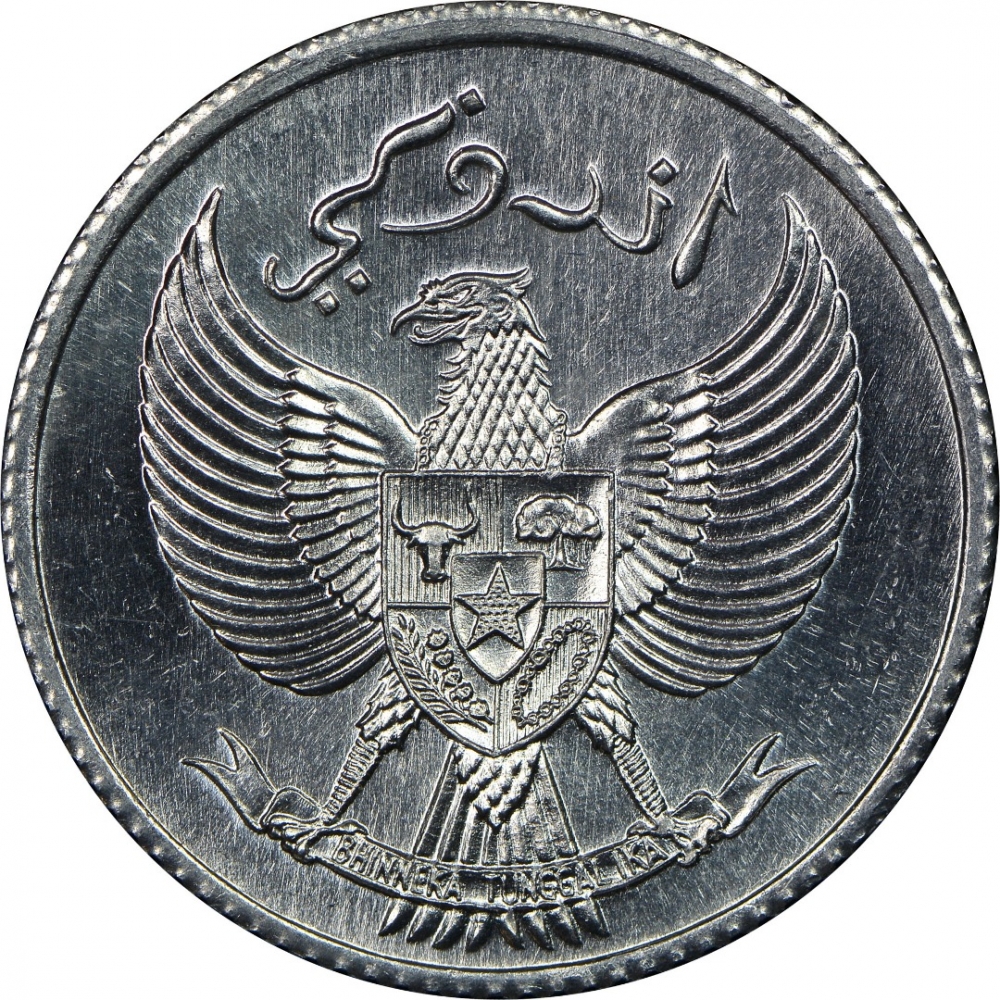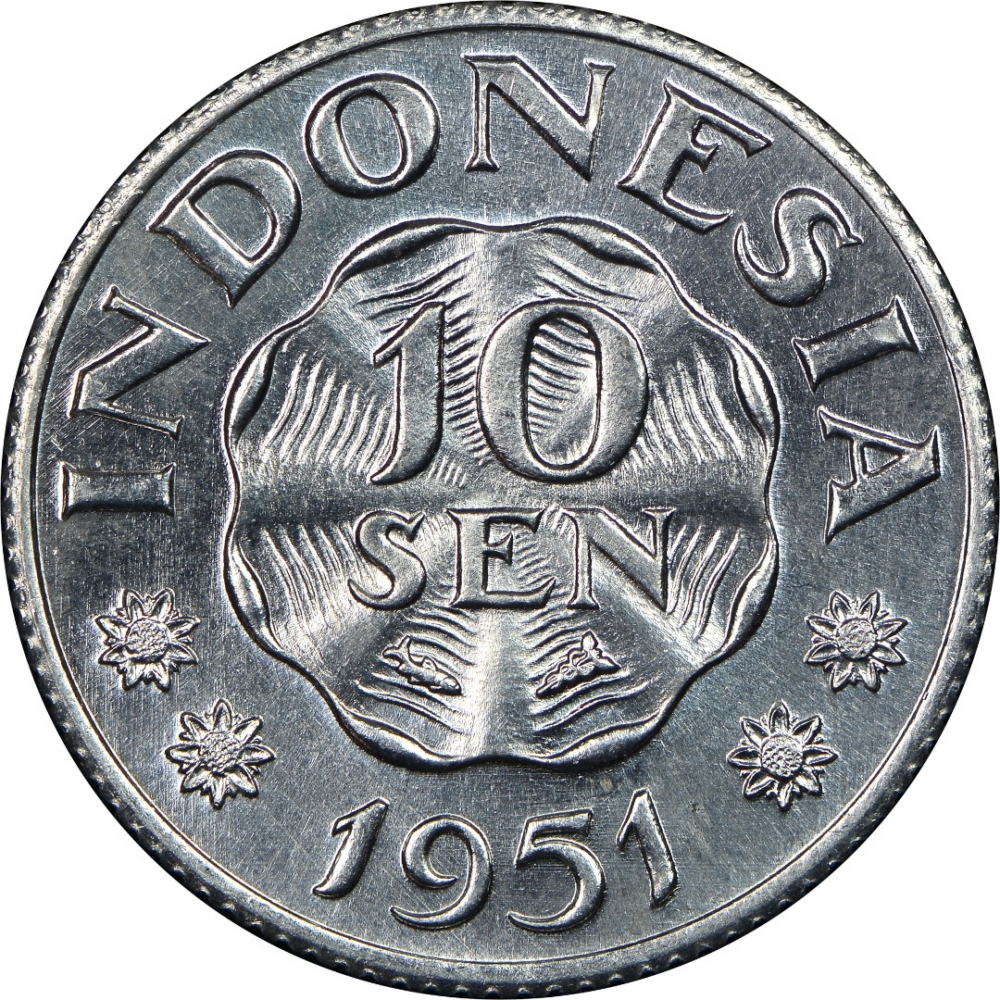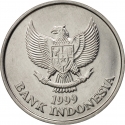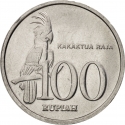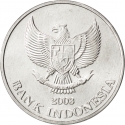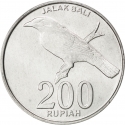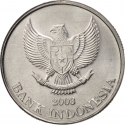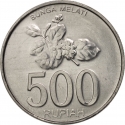Obverse

|
Depicts the national emblem of Indonesia is called Garuda Pancasila with the country name above.
The national emblem of Indonesia is called Garuda Pancasila. The main part of Indonesian national emblem is the Garuda with a heraldic shield on its chest and a scroll gripped by its legs. The shield's five emblems (star, chain, banyan tree, bull and Rice and cotton) represent Pancasila, the five principles of Indonesia's national ideology. The Garuda claws gripping a white ribbon scroll inscribed with the national motto "Unity in Diversity".
The Garuda is the mythical golden eagle, common to both Hindu and Buddhist mythology. The Garuda was a chimera, having the wings, beak, and feet of the golden eagle, but a man's arms and trunk. The use of the Garuda in Indonesia's coat-of-arms invokes the pre-colonial Hindu kingdoms that spanned across the archipelago, from which the present-day Republic of Indonesia is understood to be descended.
Garuda Pancasila was designed by Sultan Hamid II from Pontianak, supervised by Sukarno, and was adopted as the national emblem on 11 February 1950. The design was inspired by Javan hawk-eagle (Nisaetus bartelsi), an endangered raptor endemic to the mountainous forest regions of Java.
إندونيسيا
BHINNEKA TUNGGAL IKA
|
Reverse

|
A denomination within a scalloped design, ornaments flank date below.
1951: mint (right) and privy (left) marks below the value.
1954: no mint marks.
Mint mark: Caduceus (Mercury's wand, a short staff entwined by two serpents, sometimes surmounted by wings), the logo of the Royal Dutch Mint (Utrecht, the Netherlands)
Mint master mark: Fish (J.W.A. van Hengel, 1945-1969)
|
| Edge |
|
Characteristics
| Material |
Aluminium |
| Weight |
1.7 g |
| Diameter |
23.5 mm |
| Thickness |
2 mm |
| Shape |
 round
round
|
| Alignment |
Coin
|
| Mints |
Perum Peruri Royal Dutch Mint (KNM)
|
Related coins
Aluminium, 1.79 g, ⌀ 23 mm
My Collection
My Exchange
Aluminium, 2.38 g, ⌀ 25 mm
My Collection
My Exchange
Aluminium, 3.1 g, ⌀ 27.2 mm
My Collection
My Exchange
|


